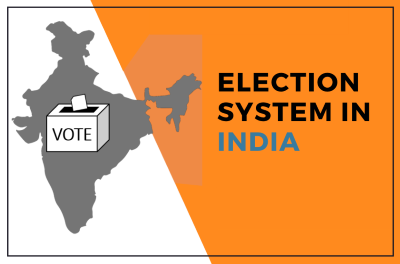Context-
Elections serve as the cornerstone of democratic societies, embodying the collective will of the people. However, the methods used to conduct elections can greatly impact their fairness and representation. In this comprehensive analysis, we look into the intricacies of election systems, examining both the mathematical underpinnings and the insights provided by physics.
Tracing the History
Dating back over 2,500 years, the earliest recorded elections in ancient Athens operated on a system reliant on chance. Candidates were chosen randomly from a pool of suitable contenders, rendering campaigning and influence ineffective in securing victory.
Similarly, historical records from tenth-century Chola inscriptions discovered at Uthiramerur in Tamil Nadu shed light on the 'Kudavolai' system used to select village representatives. Under this system, the final selection was made through a process of random selection from among the candidates voted for by the people.
In 2024, approximately 60 national elections are set to take place, involving a staggering two billion people. Among these, the most significant include the ongoing national elections in India and the highly anticipated election for the U.S. presidency. Elections worldwide are characterized by a tumultuous blend of emotions, hopes, conflicting ideologies, and, at times, even violence. Despite the chaotic nature of electoral processes, it may come as a surprise that there is a scientific foundation underlying these events.
The Flaws of First-Past-the-Post (FPTP) System
The first-past-the-post (FPTP) system, utilized in countries like India, the U.S., and the U.K., has faced criticism for its inherent flaws. Despite its simplicity, FPTP often leads to disproportionate outcomes, where the distribution of seats in parliament does not accurately reflect the popular vote share. For instance, in the 2015 Delhi Assembly elections, the Aam Aadmi Party secured a majority of seats with just 54% of the popular vote, highlighting the disparity between vote share and seat allocation. Additionally, winners under the FPTP system frequently secure less than 50% of the vote share, raising questions about the legitimacy of their mandate.
Exploring Alternative Electoral Systems
In search of more representative electoral systems, scholars have proposed alternative methods such as the Condorcet and Borda systems.
● The Condorcet system: The Condorcet system, originating from the works of 13th-century mathematician Ramon Llull, aims to ensure that the winning candidate is preferred over all others by a majority of voters. While theoretically robust, the Condorcet system is complex and has not been widely adopted in national elections due to practical challenges.
● The Borda Electoral Process and its Challenges : Another alternative, the Borda electoral process, introduced by French mathematician Jean-Charles de Borda, relies on rank-based voting to determine the winner. Despite its promise of guaranteeing a candidate with at least 50% of the vote, the Borda method faces implementation challenges, especially in large-scale elections. The complexity of the system and the potential for manipulation have hindered its widespread adoption.
● Critique of Rank-Based Voting Systems: The Arrow's theorem, formulated by economist Kenneth Arrow in 1951, highlights the inherent conflicts between certain fairness criteria and rank-based voting systems. This theorem underscores the complexity of designing electoral systems that satisfy all desirable criteria simultaneously.
Physics Perspective on Election Processes
Beyond mathematical analysis, a physics perspective offers insights into the dynamics of election processes. Drawing parallels to statistical physics, which elucidates how order emerges from disorder in complex systems, physicists have sought to identify universal patterns in electoral outcomes. Despite the apparent chaos of elections, emergent patterns can be discerned, providing a basis for evaluating the fairness and integrity of electoral processes.
Emergent Patterns in Election Data
Through the analysis of decades of election data, physicists have identified emergent patterns that transcend specific electoral systems or cultural contexts. These patterns, akin to the emergence of order from disorder in statistical physics, serve as indicators of the fairness and robustness of electoral processes. By detecting deviations from these patterns, physicists can diagnose potential malpractices and advocate for reforms to enhance the integrity of elections.
Conclusion
The quest for fair and representative elections encompasses both mathematical rigor and insights from physics. While alternative electoral systems offer theoretical solutions to the shortcomings of traditional methods like FPTP, their practical implementation poses challenges. Moreover, the critique of rank-based voting systems underscores the complexity of designing truly equitable electoral processes.
However, through the lens of physics, we gain a deeper understanding of the emergent patterns underlying electoral outcomes. These patterns serve as benchmarks for assessing the fairness and integrity of elections, transcending the intricacies of specific electoral systems. As we navigate the complexities of democratic governance, the fusion of mathematical analysis and physics perspectives offers hope for a future where elections truly reflect the will of the people.
|
Probable Questions for UPSC Mains Exam- 1. Discuss the flaws of the first-past-the-post (FPTP) electoral system, citing examples from recent elections, and evaluate the implications of these flaws on the representation and legitimacy of elected governments. How do alternative electoral systems such as the Condorcet and Borda methods address these shortcomings, and what challenges do they face in their practical implementation? (10 Marks, 150 Words) 2. Analyze the significance of adopting a physics perspective in understanding election processes, drawing parallels to statistical physics. Explain how emergent patterns in election data provide insights into the fairness and integrity of electoral systems, and discuss the potential implications of such insights for ensuring democratic governance.(15 Marks, 250 Words) |
Source- The Hindu







